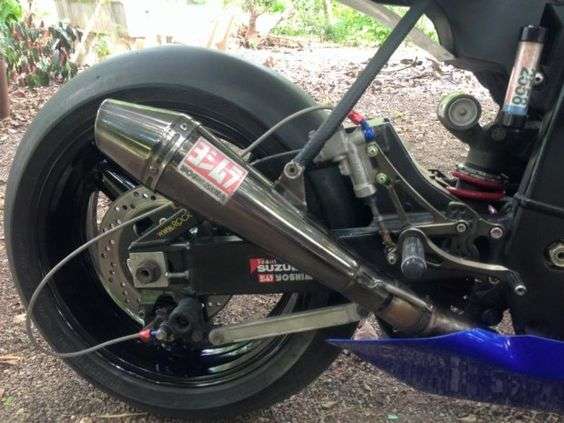
How to check shock absorbers without visiting a diagnostic station?
Content
- Damaged shock absorber - symptoms
- Worn shock absorbers - signs of individual components
- Upper shock mount - signs of damage
- Shock Absorber - Signs of Failure
- Damaged shock absorber bearing - signs of malfunction
- How to check if the shock absorber is knocking?
- Home ways to test shock absorbers
- Broken shock absorber - is it serious?
The wear of car suspension parts usually occurs gradually. Therefore, you may simply not notice anything disturbing without a detailed examination. However, knowing how to check your car's shock absorbers will help you avoid serious damage while driving. Find out what symptoms a damaged shock absorber gives!
Damaged shock absorber - symptoms
There are some of the most important signs of shock absorber wear in a car. This includes:
- reduced driving comfort (weaker damping of oscillations and vibrations);
- increased influence of crosswind on the direction of movement;
- knocks reaching the passenger compartment when driving through potholes;
- cyclic activation of the ABS system when the wheel is lifted off the surface;
- extension of the stopping distance.
Worn shock absorbers - signs of individual components
Of course, each of the above symptoms may indicate damage to the described suspension element. However, this does not always mean that the entire column needs to be replaced. Therefore, below we present the most common malfunctions of shock absorbers, together with the diagnosis of the failure of its individual parts.
Upper shock mount - signs of damage
This is one of the best hidden components. Otherwise, the upper mount of the shock absorber is its cushion. It manifests itself in different ways. Driving at high speed into a deeper hole, you will hear a distinct knock in the area of \uXNUMXb\uXNUMXbthe wheel. In addition, during heavy braking and acceleration, the car will pull to the side. And how to check the shock absorbers for the condition of the upper mount? You have to disassemble them and look at the rubber band located on top.
Shock Absorber - Signs of Failure
A bumper is an element that protects suspension parts from excessive forces. In the case of shock absorbers, the bumpers absorb energy during deflection, thereby preventing their maximum deflection. From the simple function of these elements, symptoms of a malfunction can be inferred. If the suspension of the car compresses more than before in the pits or under heavy load, then the buffers are probably worn out.
Damaged shock absorber bearing - signs of malfunction
The older the type of vehicle, the easier it is to see that something is wrong here. How to check the shock absorber for bearing damage? Symptoms appear when turning. The bearing is designed to keep the shock absorber rotating as the wheels turn. If it is damaged, then when you turn the steering wheel you will encounter tangible resistance. During tight turns, such as in a parking lot, you will also hear knocking and noise. These sounds are the result of the rotation of the spring.
How to check if the shock absorber is knocking?
Regardless of whether the shock absorber rubber was damaged, or the bearing or stopper failed, the symptoms are easy to notice. The main way is to listen to the work of the suspension when driving through bumps. Also try to observe how the car behaves in corners. Check if:
- wheels do not lose traction;
- are there knocks on potholes;
- the car is not subject to withdrawal in different directions during braking and acceleration.
Home ways to test shock absorbers
How to check shock absorbers yourself? Probably the most popular way for a home mechanic to check the condition of shock absorbers is to put pressure on the body. Try to do it vigorously and repeat the action several times. If you hear a knock, you probably need to take a closer look at the condition of the shock absorber. Also check to see if the machine wobbles or returns to its original position. Then it is worth trying a complete diagnosis.
Broken shock absorber - is it serious?
Definitely yes, and this should not be underestimated. If you notice one of the above symptoms but don't know how to check your shock absorber, go to a mechanic. If you notice that the shock body is wet with oil, replace it as soon as possible. Of course, do this on the entire axle, because the shock absorbers have to be changed in pairs.
You already know how to check shock absorbers, so you can diagnose some problems yourself. Driving with faulty components is very risky, so don't underestimate the problem. After replacing the defective element, your car will run much better and you will be safer behind the wheel.
